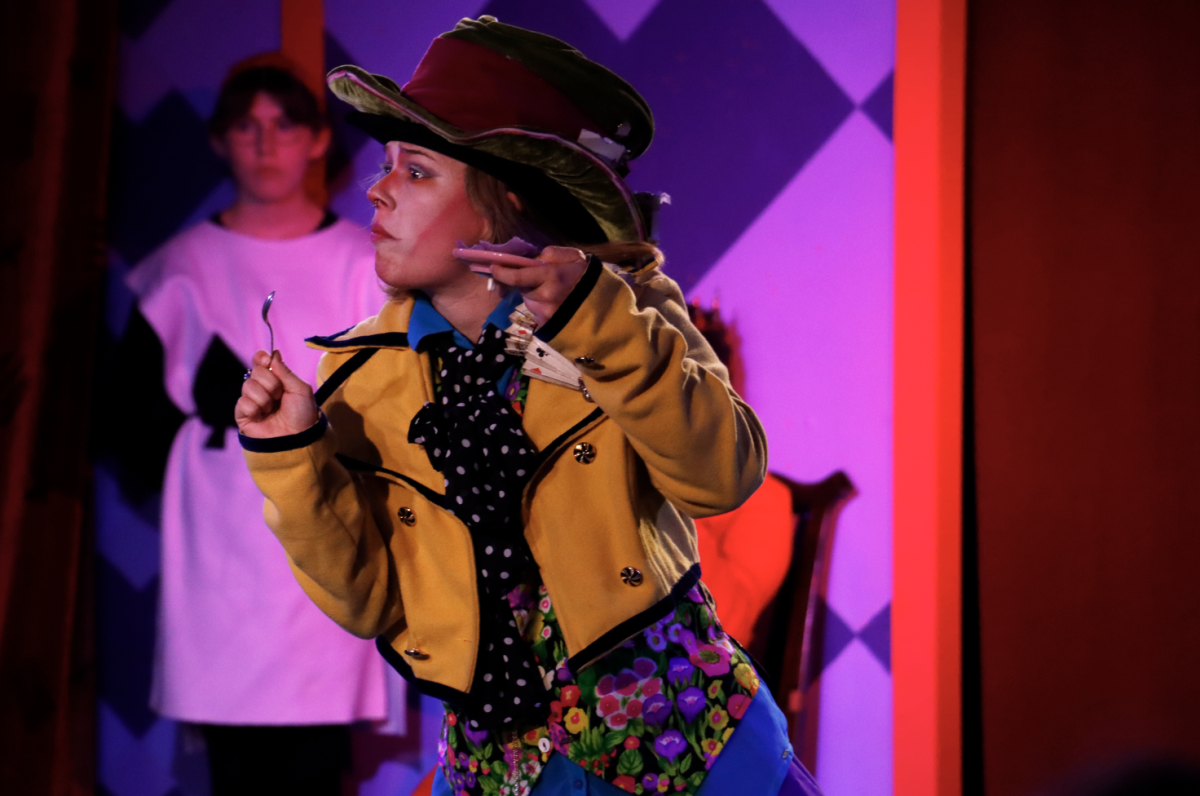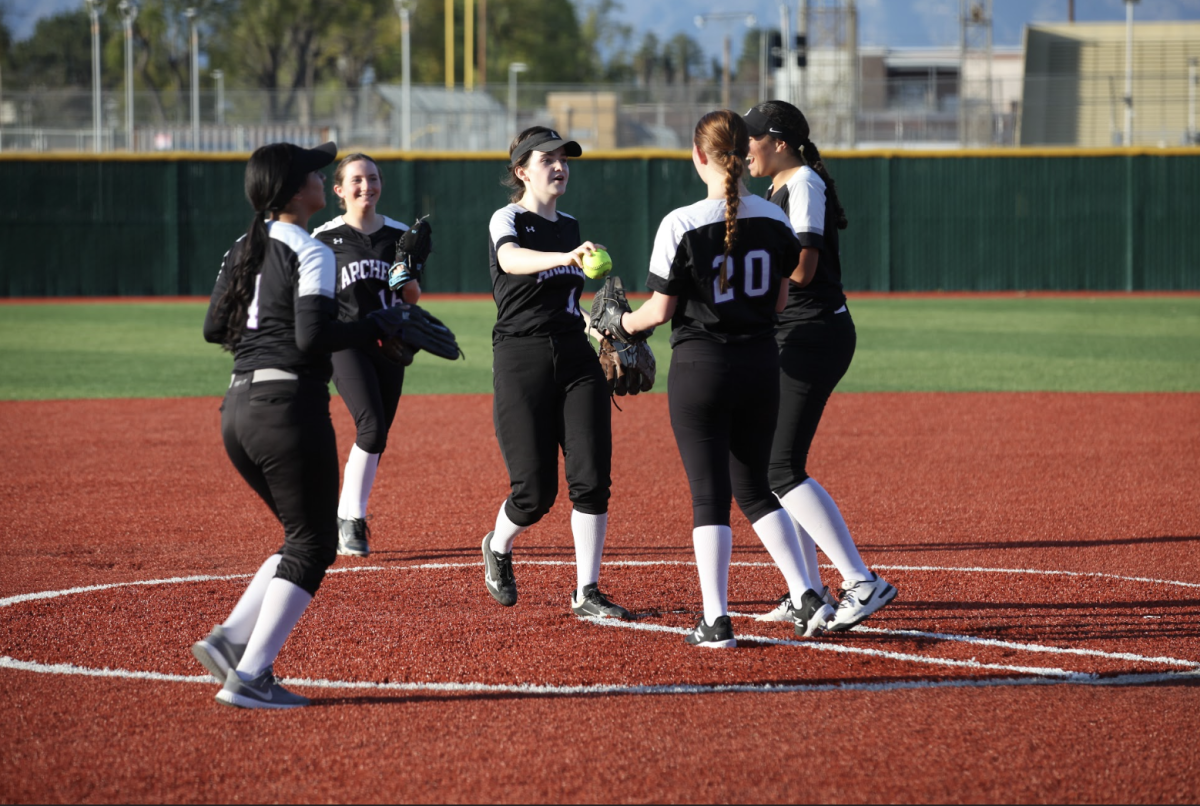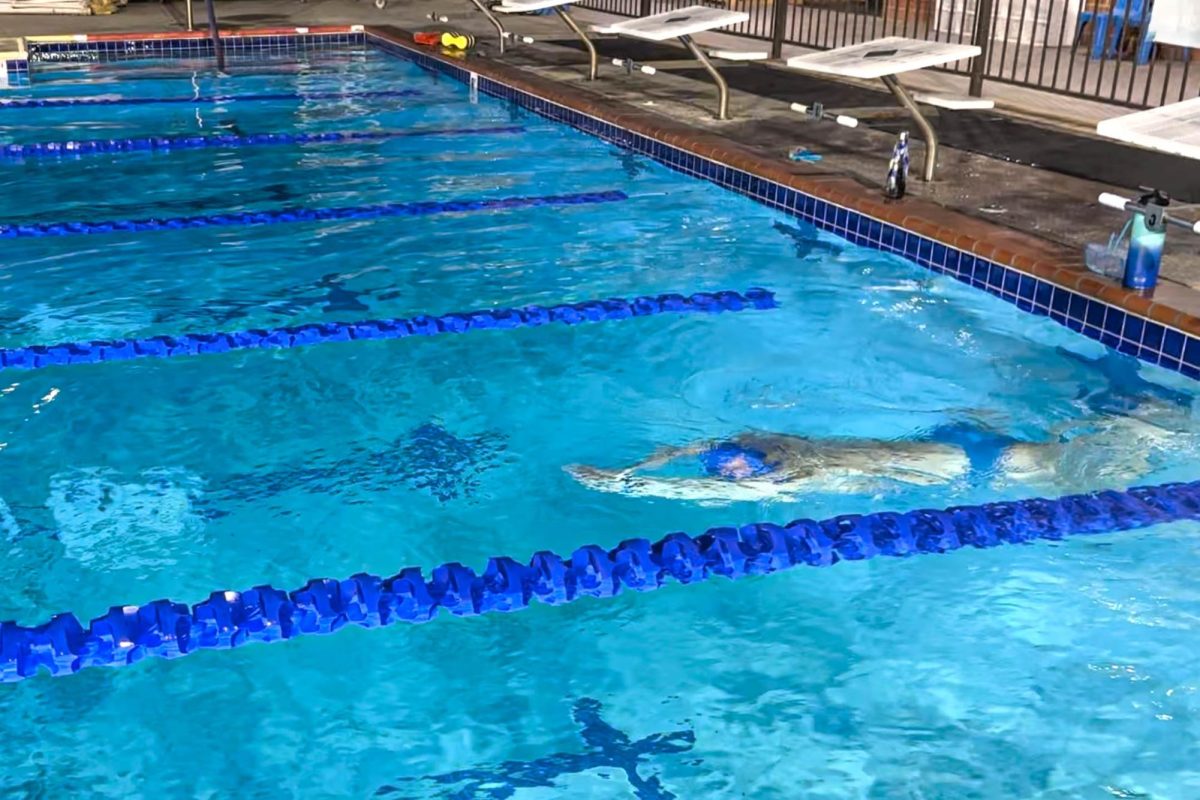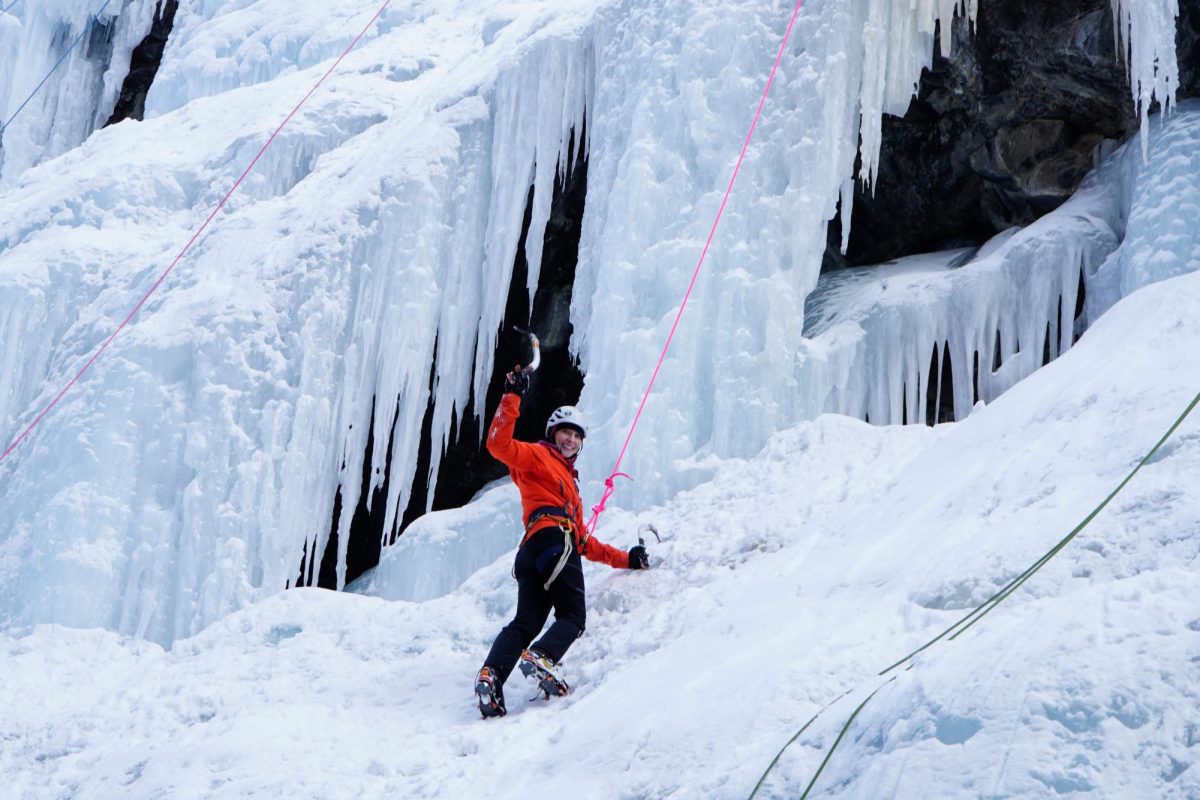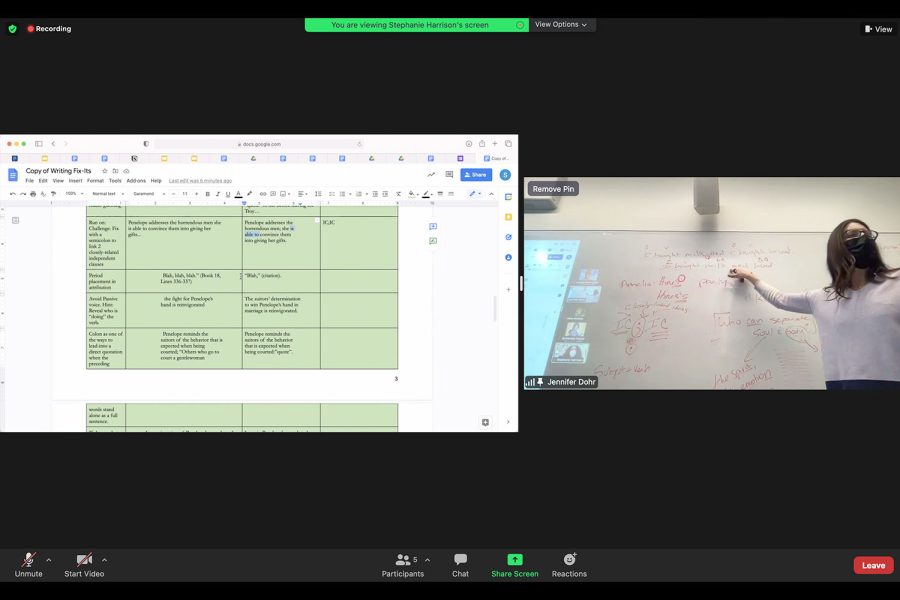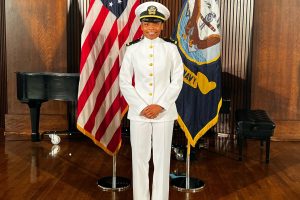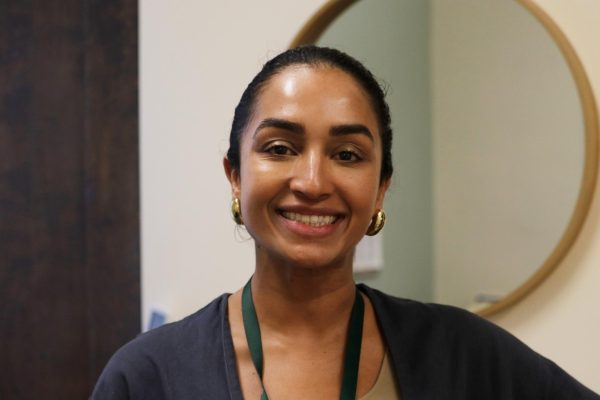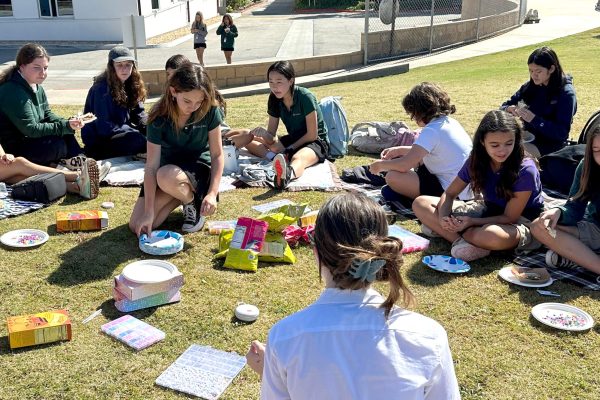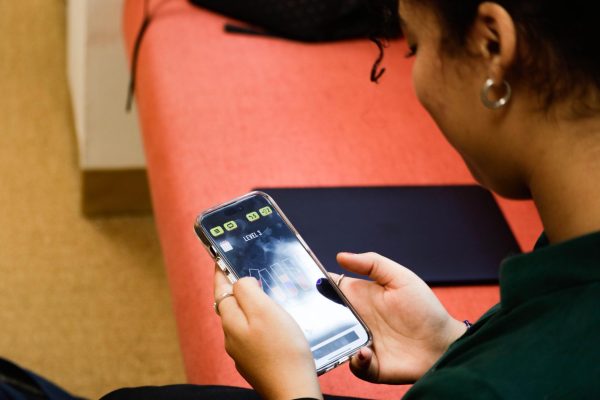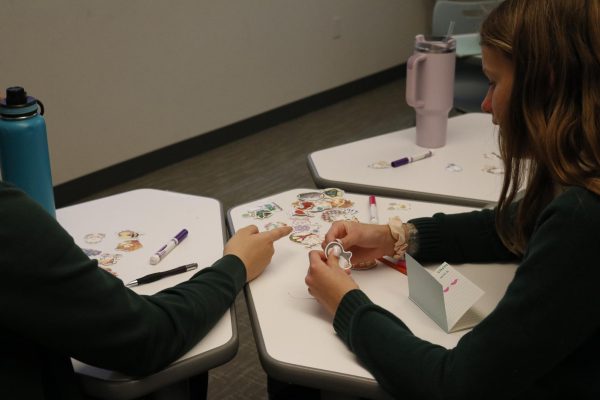Remote learning is the ‘neither-nor land’ of learning spaces
Photo credit: Maia Alvarez
Jennifer Dohr points to a classroom whiteboard as she explains how to fix writing errors to her online and in-person students. Students of hybrid learning attempt to connect and learn from the digital space. “Obviously the best-case scenario is we all get to go in person, but staying online, it’s not horrible,” Guinevere Hesse said. “I am learning new things and I’m able to ask questions when I need to and schedule meetings when I need to. I’m able to do a lot of the same things.”
February 6, 2022
When students returned to class on campus, students were greeted by their fellow classmates, both in their seats and projected onto the whiteboard. To prioritize safety, the Archer community continued the new semester with a number of students joining online. In the past weeks, students participating in remote learning have lessened, but the option has remained open.
The remote learning access policy is when at-home students who tested positive or have been exposed to COVID-19 have access to joining an in-person class through Zoom. Differing from hybrid learning, which is the process of blending in-person learning with online educational tools, remote learning is in association with the online resources and Zoom opportunities that at-home students have access to due to COVID-19 restrictions. English teacher Jennifer Dohr said the remote learning environment is the hardest of any of the learning spaces.
“You’re in neither-nor land. You’re present for half of your class or more. Then you’re a two-dimensional body in a box for your other students,” Dohr said. “As a teacher, I’m continually finding my mind scrambled and split, trying to remember how I best serve the room. Then, how I can also best serve my little people in boxes two-dimensionally in front of me.”
For a week-and-a-half, sophomore Guinevere Hesse experienced remote learning from her bedroom. Heese said connecting was a struggle, but appreciates the efforts the school is making for students who decide to stay home.
“I definitely feel like I am not the first person on my teacher’s priority. Sometimes I will be on the Zoom by myself or with other people, and the teacher will have us facing into some remote, distinct corner while they’re teaching the center of the classroom, and we can’t really see the board or the teacher is very hard to hear,” Hesse said. “But all in all, I really do think that Archer is doing a great job.”
Teachers have become adaptive in alternating between online and in-person students and have created tactics to continue fostering connection in the classroom. As a backup plan for student connection, students on campus will Zoom in online students during discussions. Additionally, teachers that teach extracurriculars kept their Zoom rooms open for any remote students.
“Ms. Pov was able to Zoom me into rehearsal, which was nice because I didn’t miss anything there. I was still able to stay connected that way, which I really appreciated,” senior Avery Fox said. “When I got back to campus, I could see that all of my teachers who were Zooming students into classes were really making an effort to try and include them … if there were other students on Zoom, putting them in breakout rooms if there would be a discussion so that they could talk to other people, or even having a buddy in class or a few buddies who they could work on problems with.”
“I’m just incredibly proud of our students. They are navigating ever-changing dynamics and situations in a way that they’re doing it so gracefully and full of positivity. I’m just seeing a lot of flexibility and push and drive and I’m really proud because it is hard.”
— Jillian Kearney, math teacher
Fox experienced remote learning from home for three days before returning to campus. She said having remote learning available to all students is a useful resource.
“Last school year, when students were given the option to go back in-person, I actually didn’t. I stayed online the entire year. And I think just having that option open would help some students in various situations,” Fox said. “Regardless of whether you tested positive for COVID or not, some people just may not feel comfortable going back to school at a given time, given the number of COVID cases. People may have family members who are immunocompromised. Always having this option open, I think, would be helpful in the future.”
During the pandemic, teachers maintained a balance of asynchronous and synchronous work so students could take breaks from the screen within the school day. In remote learning, some teachers have taken a different approach by prioritizing student connections synchronously.
“I think we all had way too much isolation. I think the studies are out there show that isolation for teenagers leads to higher rates of anxiety and depression. So I am not eager to go back into an async world and I don’t think that’s what’s best for adolescent development,” Dohr said. “Looking at the stage of development you are in as students, you very much need one another and you need the live exchange of ideas. That said, I have become as a teacher more aware that there are certain assignments I can do asynchronously to help you manage your own time and have some freedom.”
Alternatively, math teacher Jillian Kearney said the flexibility between asynchronous and synchronous learning is highly valuable in prioritizing the at-home students’ screen time.
“I know how difficult it can be to be on your computer screen for hours on end. If they have had too much screen time, they can still continue on their own without feeling like they’re falling behind or missing a beat,” Kearney said. “I think it is important because we felt the drain last year of what it was like to be on the computer nonstop all day, and I don’t want to make a student do that. So I’d like to offer that as options that students can asynchronously get it done.”
Kearney said despite the circumstance of offline and online learning, she is proud of the student body’s hard work.
“I’m just incredibly proud of our students. They are navigating ever-changing dynamics and situations in a way that they’re doing it so gracefully and full of positivity,” Kearney said. “I’m just seeing a lot of flexibility and push and drive, and I’m really proud because it is hard. It isn’t breaking their spirit, and I don’t know how they’re doing it, but they’re doing so well with it.”
The remote learning access policy will continue through the rest of the 2021-2022 school year. For some students, the remote space emphasized the value of in-person learning.
“I will savor every second I am on that campus because I have just missed it,” Hesse said. “You have to savor every second you are offline and in-person, because who knows when it’s all going to go away again.”




![Freshman Milan Earl and sophomore Lucy Kaplan sit with their grandparents at Archer’s annual Grandparents and Special Friends Day Friday, March 15. The event took place over three 75-minute sessions. “[I hope my grandparents] gain an understanding about what I do, Kaplan said, because I know they ask a lot of questions and can sort of see what I do in school and what the experience is like to be here.](https://archeroracle.org/wp-content/uploads/2024/03/grandparents-day-option-2-1200x800.jpg)










